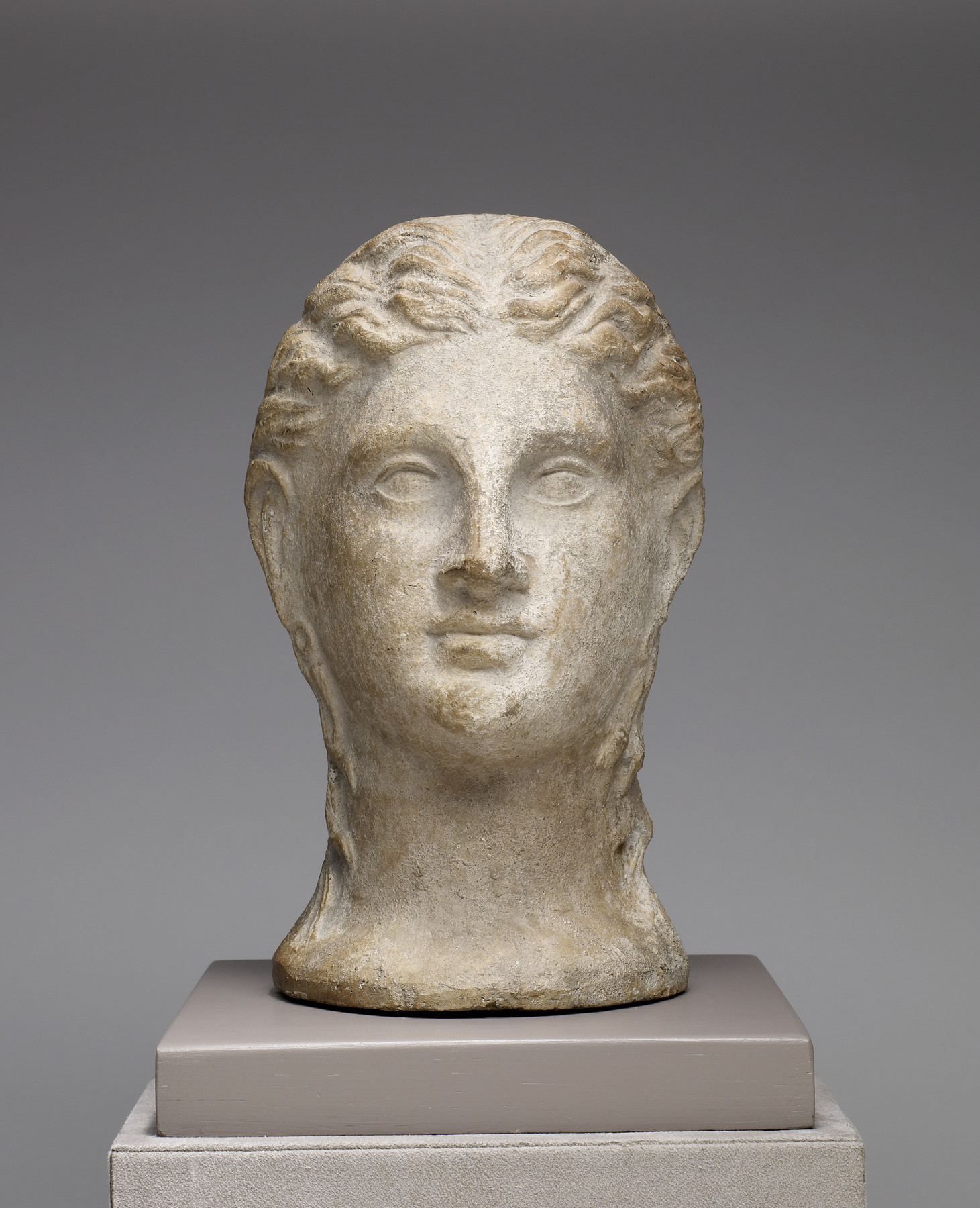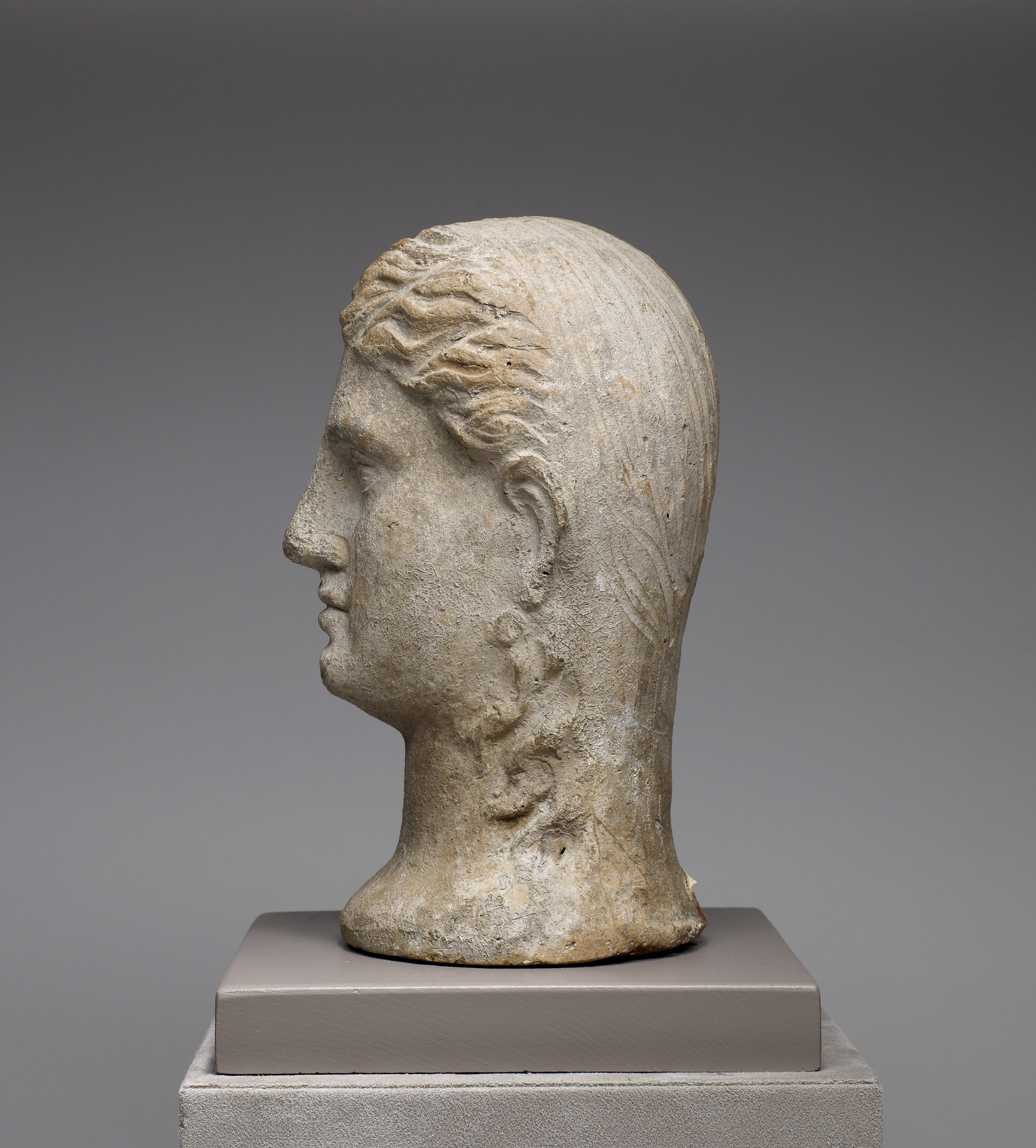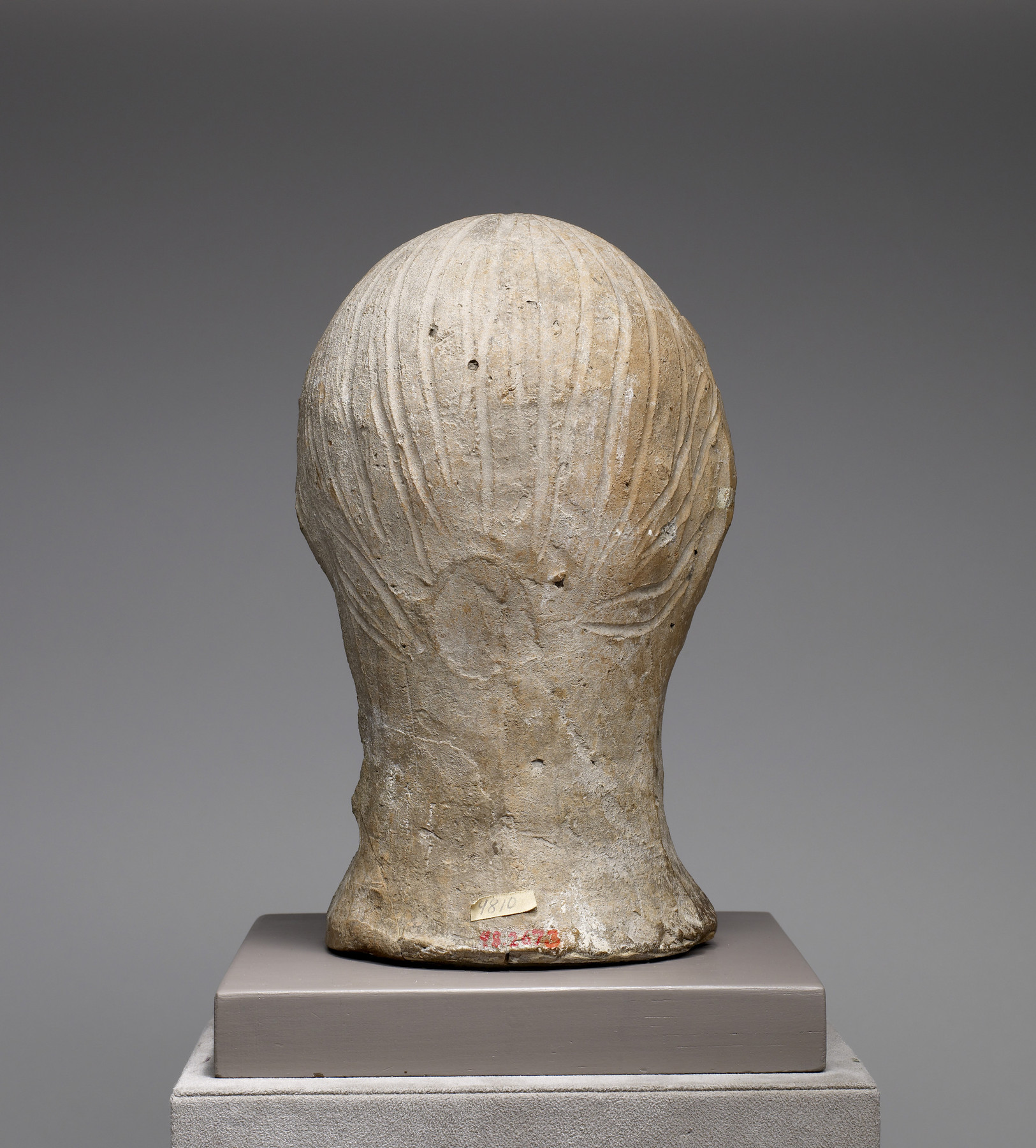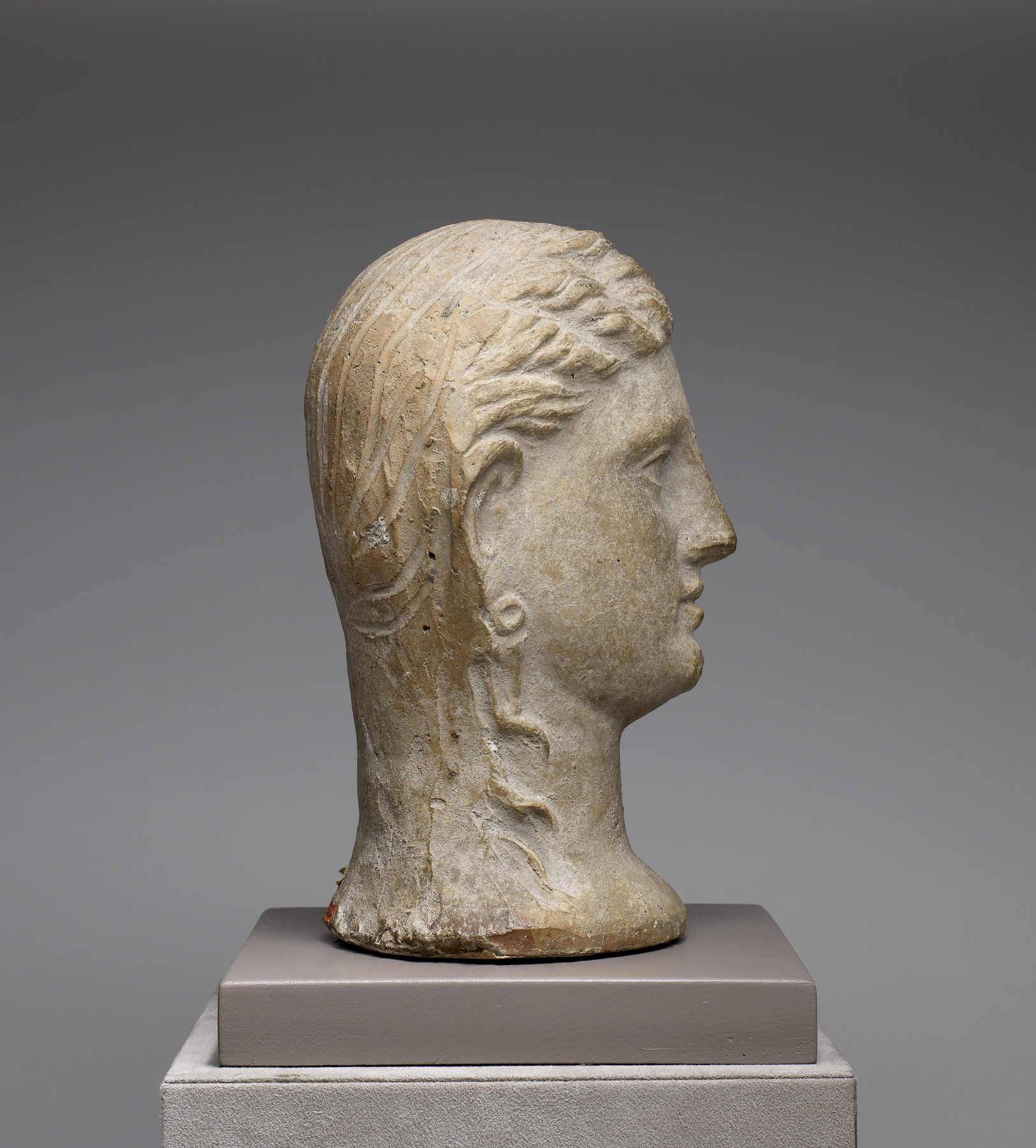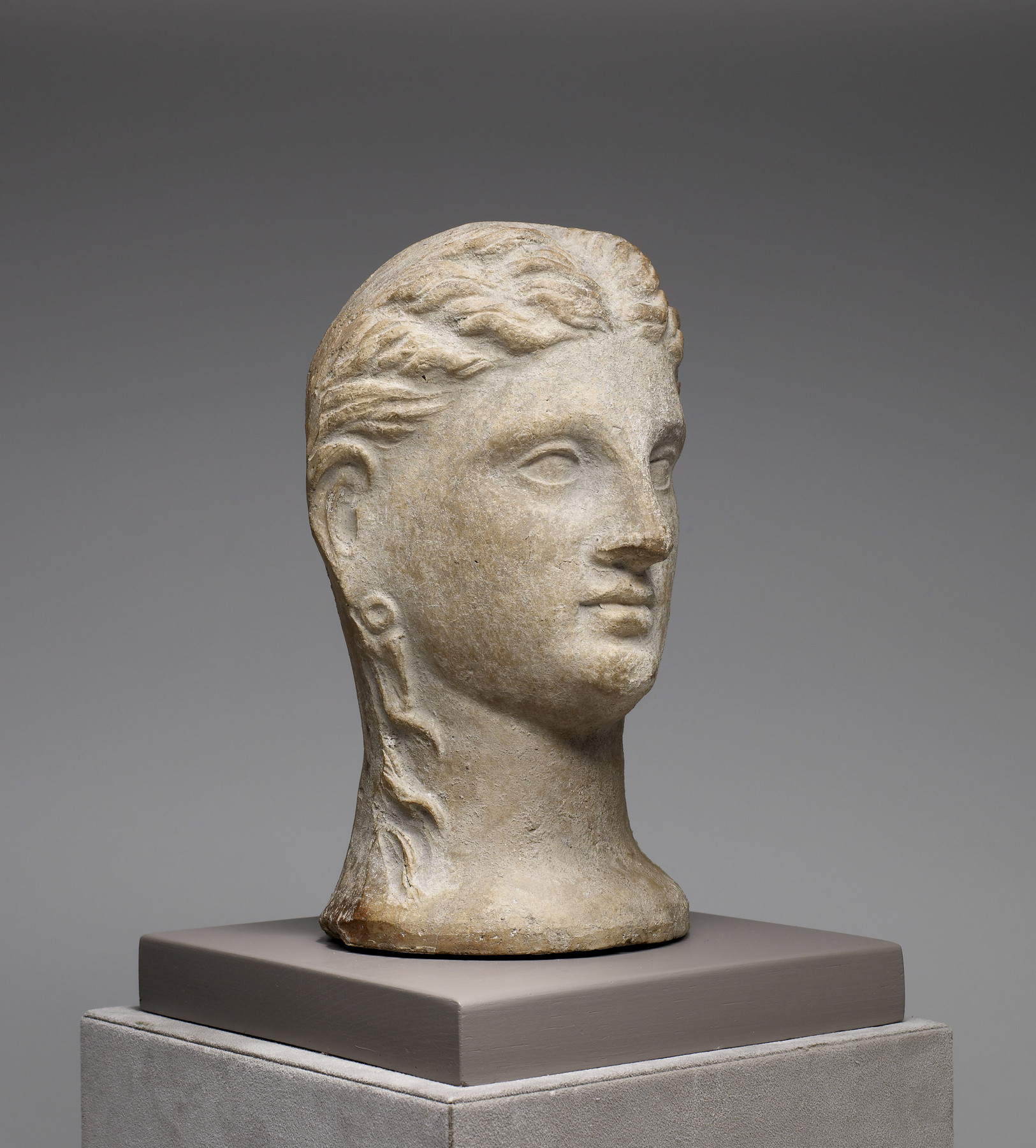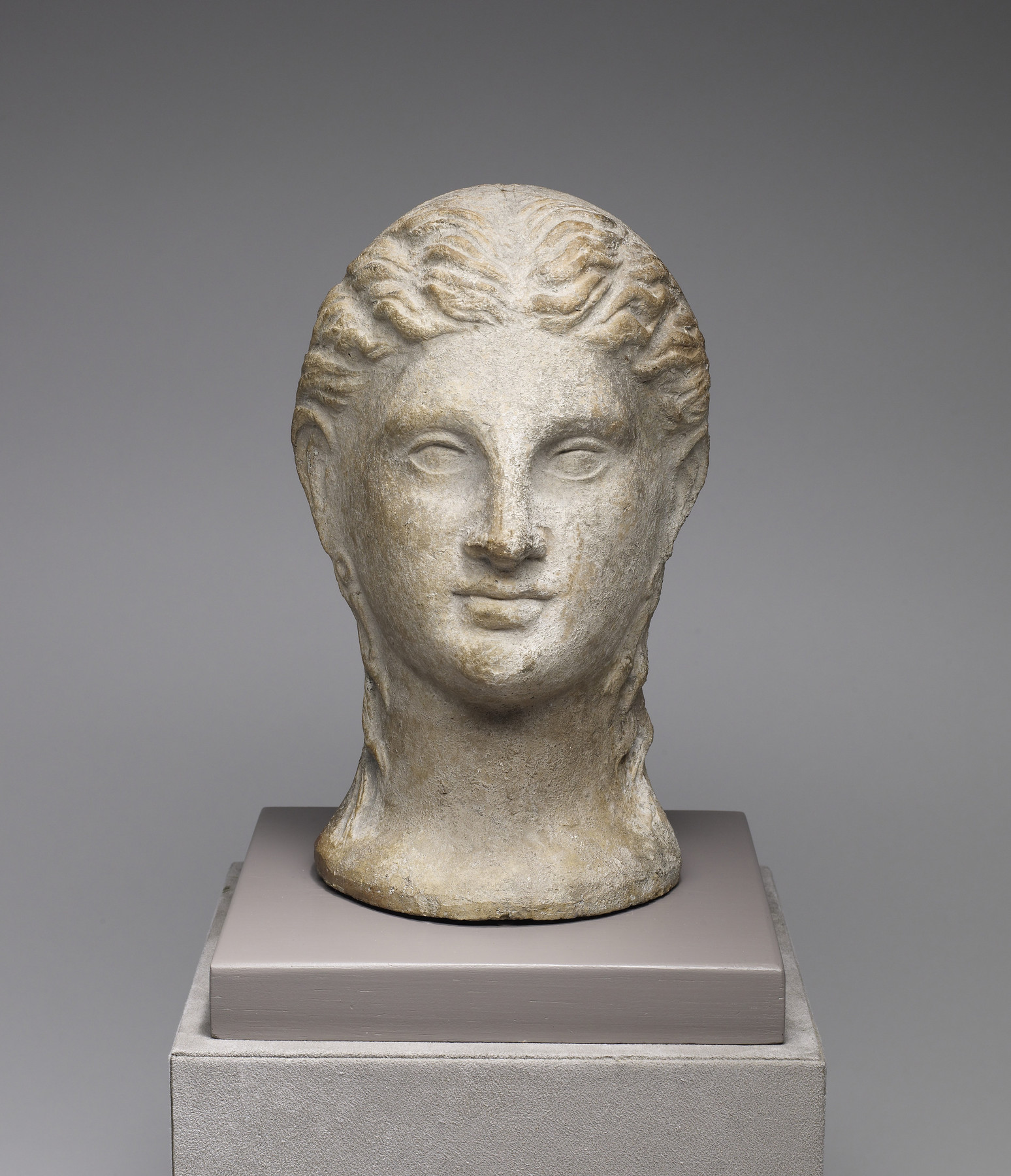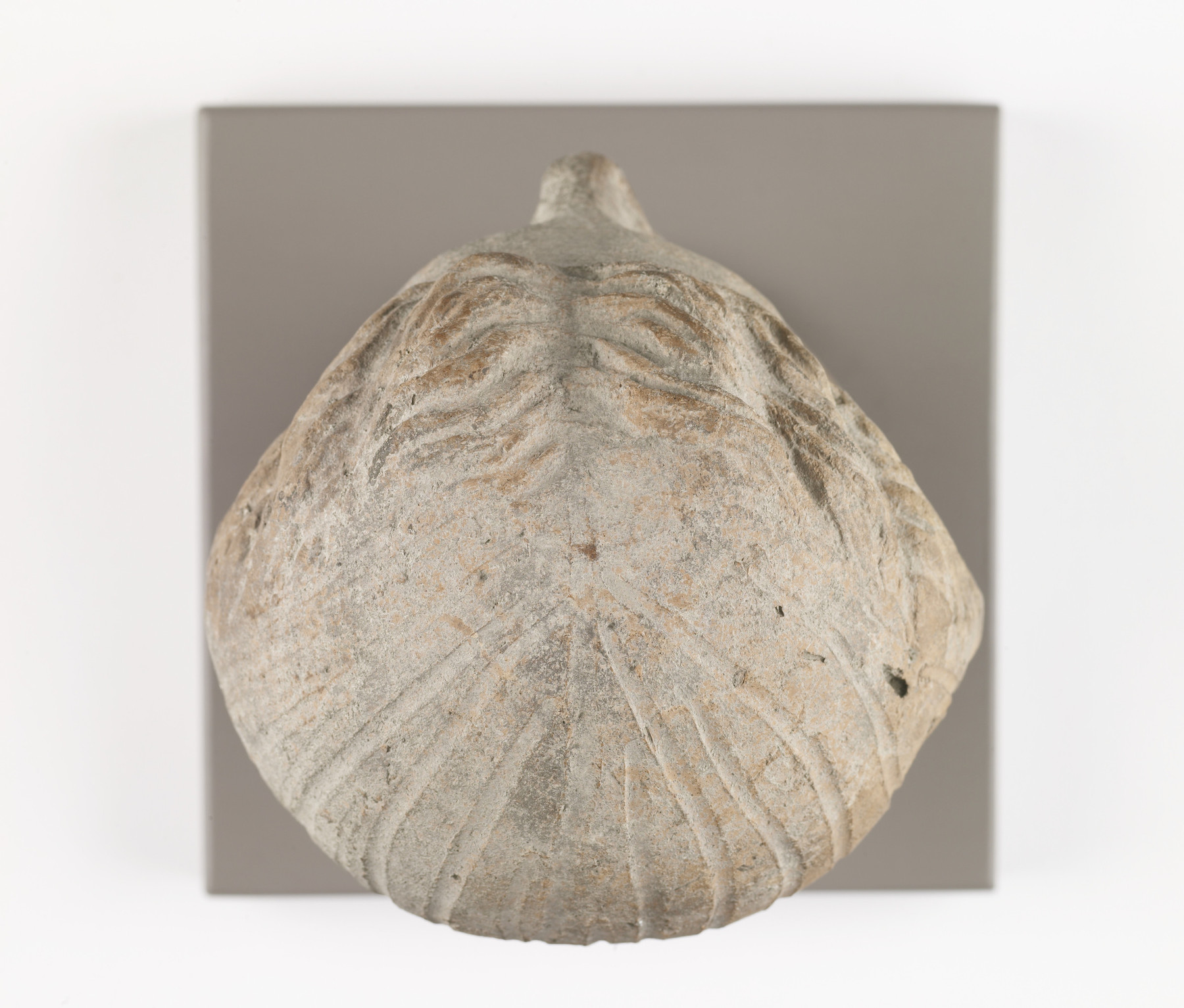Female Votive Head
(Ancient Greece )
The proportions and the fine rendering of idealized features all mark this head as being in the Classical style. Her almond-shaped eyes are set beneath the protruding brow, from which extends a thin, elegant nose. Her mouth is small and tightly closed, but indentations are the corners of her lips extenuate the fleshiness of her cheeks. The undulating waves of her hair are also idealized as seen in the neat symmetry of the centrally parted style and precision with which each wave is produced, particularly the tendrils, or Venus-rings, that graze the nape of her neck. She wears simple disc earrings with a pyramidal pendant.
Votive offerings in the form of heads are typical dedications from the Etruscan sanctuaries of central Italy and became widespread from the 4th to 3rd centuries BCE. Most votive heads are made using two molds—one for the face and one for the back of the head. The two clay halves were joined and the features were reworked with a modeling tool to create more individuality. The heads are meant to be viewed frontally, with little attention to detail paid to the back of the sculpture. Often times these heads were represented with a simple veil draped over the back of the head. The style of most Etruscan votive heads clearly demonstrates the influence of Classical Greek sculpture (480-323 BCE), a period characterized by a heightened interest in representing the ideal human form.
Provenance
Provenance (from the French provenir, 'to come from/forth') is the chronology of the ownership, custody, or location of a historical object. Learn more about provenance at the Walters.
Kaufmann’s Department Store, Pittsburgh, [date and mode of acquisition unknown] [1]; Mrs. Robert M. Weidenhammer, Rockville, MD, 1966, by purchase; Walters Art Museum, 1992, by gift.
[1] illustrated in a notice for the Kaufmann's sale printed for 4 March 1966, Pittsburgh Post-Gazette, page 10
Conservation
| Date | Description | Narrative |
|---|---|---|
| 12/11/2017 | Examination | loss compensation |
| 12/29/2017 | Treatment | loss compensation |
| 12/29/2017 | Treatment | A small loss in the left temple was filled with toned Japanese tissue paper. |
Geographies
Italy (Place of Origin)
Measurements
H: 10 7/16 x W: 6 1/8 in. (26.5 x 15.5 cm)
Credit Line
Gift of Mrs. Robert M. Weidenhammer, 1992
Location in Museum
Accession Number
In libraries, galleries, museums, and archives, an accession number is a unique identifier assigned to each object in the collection.
In libraries, galleries, museums, and archives, an accession number is a unique identifier assigned to each object in the collection.
48.2673

